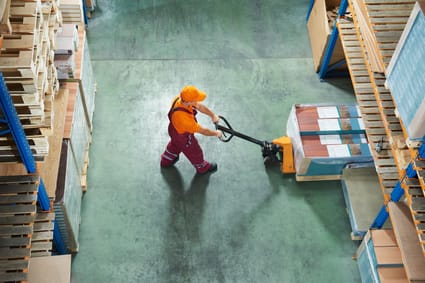
Hotel staff face many of the same injury risks as warehouse and shipping workers — especially when it comes to the repetitive tasks of moving equipment and supply carts. Proper techniques and ergonomic hospitality industry carts help reduce the risk of back injuries and upper body fatigue.
Here are some tips from Oklahoma State University researchers that hospitality staff should keep in mind when training and managing employees:
Store all items on shelves. Supply closets should always make use of shelving to keep items up off the ground.
Place heavy items in the easy lifting zone. The heaviest items should be placed at waist level to reduce back strain when picking them up. Items close to the floor or above the head should be the lightest weight items.
Bend at the knees. Like a baseball catcher getting into position, workers should squat to pick things up by bending at the knees with the feet at shoulder width.
Get a good grip. Reaching out and grabbing things with the fingertips sends more stress through the upper body than firmly grasping objects with the whole hand.
Face forward. When loading up a cart, workers should face the item being picked up and then turn (not twist) to face the cart.
Use motorized carts. Hotel workers who push or pull supply carts up and down the hallways face back injury risk from long-term, repetitive stress. Hospitality industry carts with motorized operation take this out of the equation.
For help reducing back injuries among employees, follow our blog for materials handling tips and check out DJProducts.com for info about ergonomic hospitality industry carts.



